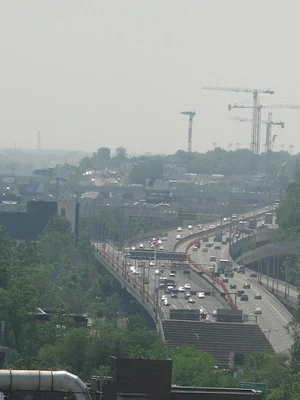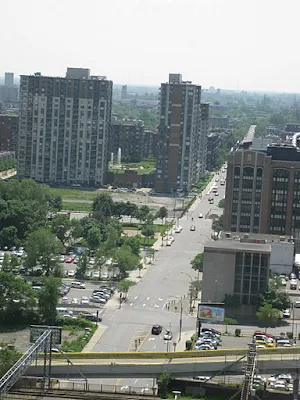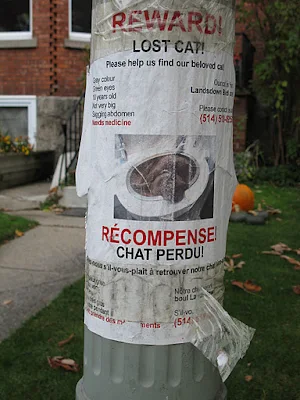Friday, March 29, 2013
Friday, March 22, 2013
Friday, March 15, 2013
Friday, March 8, 2013
Norval Morrisseau at the new wing of the MMFA
Wednesday, March 6, 2013
Home of Thomas Sydney Morrisey on Cedar Avenue, Westmount
Thomas Sydney (T.S.) Morrisey, Darrell Morrisey's older brother, lived most of his life within walking distance of his family home at 85 Church Hill Avenue, in Westmount, Quebec. Morrisey is a true war hero, he has a distinguished military career which includes spending part of World War One in Siberia. He was also a family man. These are photographs of Morrisey's home at 3275 Cedar Avenue, in Westmount, Quebec. Morrisey phoned my mother in the early 1940s regarding Morrisey family history, but we are not related to his family. Photos taken fall 2012.
Revised: 03 July 2018
Monday, March 4, 2013
Darrell Morrisey on Church Hill Avenue
 |
| May 2011 |
.JPG) |
| Fall 2012 |
Here is where Darrell Morrisey grew up, at 85 Church Hill Avenue in Westmount, Quebec, as it looks today. Darrell is one of the forgotten or "lost" members or of the Beaver Hall group of Montreal artists. Regrettably, none of her art seems to have survived since her death in the 1930.
Revised: 03 July 2018
Here is a link to my essay on Darrell Morrisey, https://archive.org/details/DARRELLMORRISEYAForgottenBeaverHallArtistByStephenMorrissey
Revised: 18 January 2023
Friday, March 1, 2013
Sunday, February 10, 2013
Tuesday, February 5, 2013
Tuesday, January 29, 2013
Tuesday, January 15, 2013
Tuesday, December 25, 2012
Saturday, December 22, 2012
Darrell Morrisey at the Linton Apartments
Always a prestigeous address, the Linton Apartments in downtown Montreal--near the corner of Guy and Sherbrooke Street West--was home to Darrell Morrisey, one of the "forgotten" Beaver Hall Artists, in the early years of the 20th Century.
Thursday, December 20, 2012
Saturday, December 15, 2012
Wednesday, December 5, 2012
Buckminister Fuller's geodesic dome at Expo 67
 |
Here is a view of Buckminster Fuller's geodesic dome--this was the American pavilion at Expo 67--seen here from the South Shore. In the eyes of many, Expo 67 was the last expression of Montreal's greatness; money is conservative and business avoids political unrest. With the popularity of Quebec separation from Canada, many head offices left the province. Expo was followed by the summer Olympics in 1976... Montreal was still on a roll, but native Montrealers remember the Olympics because of corruption, the Olympic stadium cost about $1B and it wasn't paid off until the early 2000s. Later that same year, on November 15, 1976, the Parti Quebecois was elected to power and with it economic decline began in earnest. The PQ represented different things to different people, to English-speaking Quebec it represented ethno-centricity and the oppression of the English-speaking community. However, most English-speaking Quebeckers accepted the new order of things in Quebec, they recognized that the status quo could not continue, that the French-majority should be masters in their own province. The English-speaking population that didn't accept how things had changed (approximately 200,000 people) left the province for life in Toronto, Calgary, and Vancouver. For the French-speaking majority it was a time for independence, guaranteeing the future of the French language and culture in Quebec, it was a time to celebrate.
Sunday, December 2, 2012
The Morrissey Tavern in 1993
Subscribe to:
Posts (Atom)
.JPG)
.JPG)
.JPG)
.JPG)
.JPG)
.JPG)
.JPG)
.JPG)
.JPG)

.JPG)
.JPG)
.JPG)



.JPG)
+cropped.jpg)
+cropped.jpg)
.JPG)















.JPG)
.JPG)
.JPG)









